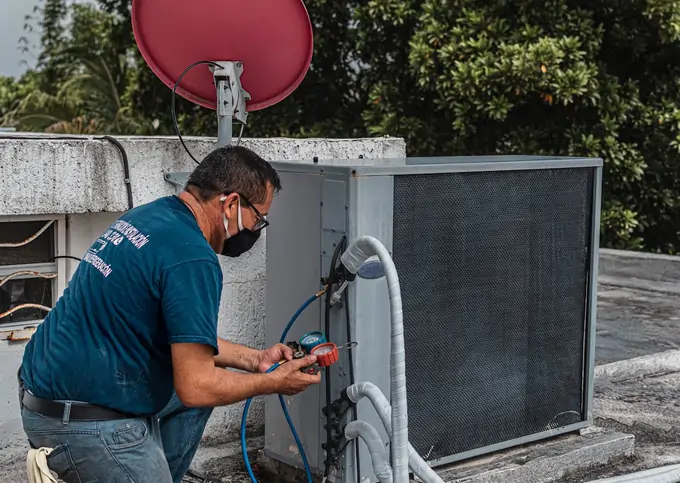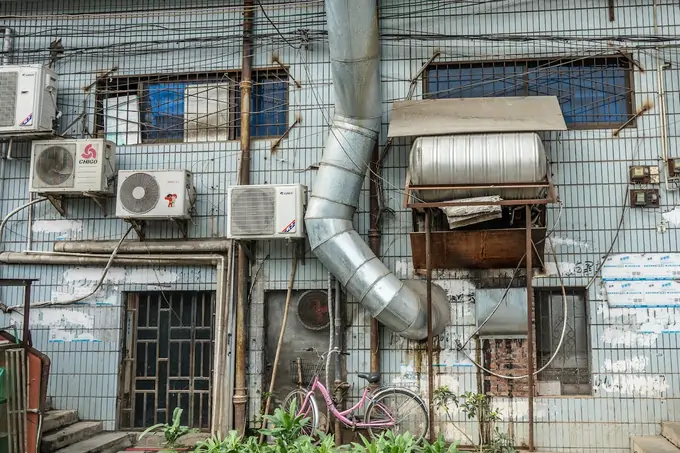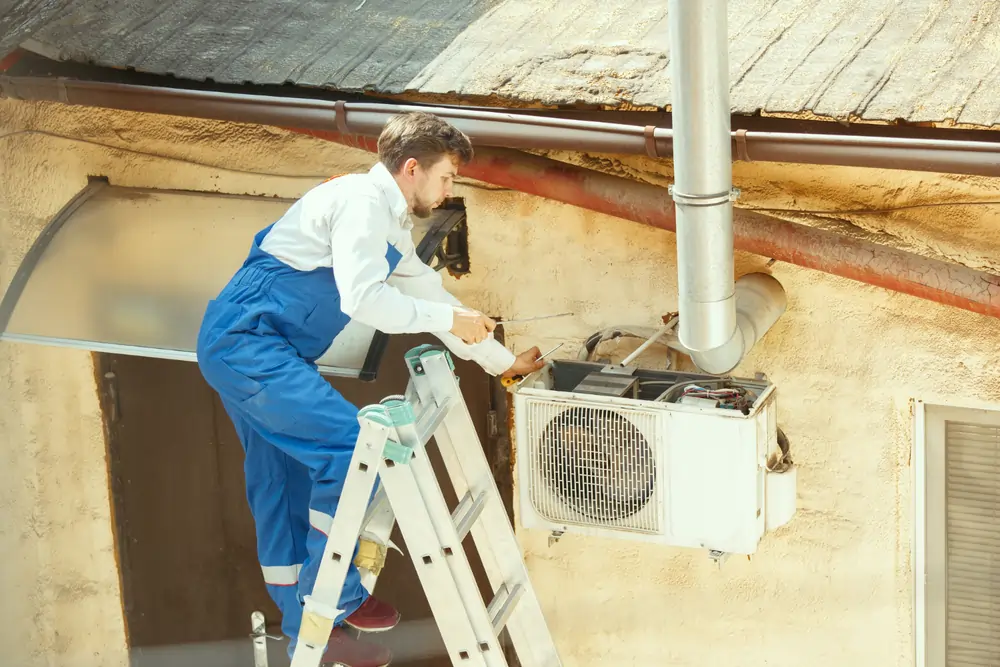Are you tired of sky-high energy bills and uneven cooling in your home? The culprit might be hiding in your walls. Air conditioning duct repair is a crucial but often overlooked aspect of home maintenance. In this guide, we’ll explore why your ducts matter and how to fix common issues.
Air Conditioning Duct Repair
Have you ever walked into a room that feels stuffy or too hot, even when your air conditioning is running? If so, you might be dealing with duct issues! According to the U.S. Department of Energy, about 30% of the energy used for heating and cooling a home is wasted due to leaky ducts. That’s not just frustrating—it can significantly impact your energy bills! In this guide, we’ll explore the ins and outs of air conditioning duct repair, equipping you with the knowledge to tackle common issues and maintain a comfortable home.
Understanding Air Conditioning Ducts
Understanding air conditioning ducts can be a bit of a maze, right? If you’re dealing with leaking air or need a duct replacement, knowing the air duct replacement cost is crucial. The cost to repair ductwork or replace ductwork can vary, and it’s smart to get an idea of the average cost before diving in.
Whether it’s duct repair and sealing or a full ductwork replacement, the installation process can be a bit overwhelming. If you find yourself asking, “How much does air duct replacement cost?” or “What’s the cost to replace a section of ductwork?” then it’s time to explore replacement services.
Need a duct repair service? Or maybe it’s time for air duct cleaning to keep your air conditioning system running smoothly. Whatever it is, knowing the air duct repair cost and replacement costs can help you plan ahead. Don’t wait too long to schedule service for your air conditioning and heating needs!
Your home’s duct system is the unsung hero of comfort. It’s a network of passages that distribute conditioned air throughout your living spaces. But what happens when this system fails? Let’s dive in.
Types of Ducts
- Flexible ducts: Snake-like tubes that bend around obstacles.
- Rigid ducts: Sturdy metal pathways that offer durability.
Properly functioning ducts are essential for maintaining consistent temperatures and reducing energy waste. Without them, your HVAC system struggles to keep up, leading to higher costs and less comfort.
Common Issues with Air Conditioning Ducts

If you’re having trouble with your air conditioner, it might be time to check out your common air duct issues. Things like air leaks and a clogged air duct can seriously mess with the air quality of your home. An air duct inspection can help spot any hole in a duct that’s letting air escape.
When it comes to repair vs replace, duct repair and replacement services can handle both. Duct repair can fix those pesky air duct leak repairs, but sometimes you just need air duct replacement if the length of ductwork is too damaged. The replacement process can improve the air quality and efficiency of your air duct system.
Wondering how much does it cost? The national average cost for ductwork repair varies, but DIY air duct fixes can sometimes save you some cash. Keep in mind the overall cost might include ductwork service and heating and air conditioning checks. Regularly checking your air ducts every so often can help prevent issues before they start!
Leaking ducts: The Silent Energy Thief
Imagine throwing money out the window. That’s essentially what happens with leaky ducts. Air duct sealing becomes crucial when:
- Gaps form at connection points
- Old tape or sealant deteriorates
- Pests damage ductwork
A case study by the Department of Energy found that the average home loses 20-30% of air through leaks. That’s a significant chunk of your hard-earned money escaping into your walls!
Duct blockages: When Airflow Hits a Wall
Over time, dust and debris build up inside your ducts. This accumulation:
- Reduces airflow
- Forces your system to work harder
- Decreases indoor air quality
Regular duct cleaning can prevent these issues, saving you from costly repairs down the line.
Poor insulation: The Energy Efficiency Killer
Poorly insulated ducts are like a leaky bucket. They waste energy and make your system inefficient. Proper duct insulation can:
- Reduce energy loss by up to 30%
- Improve overall system performance
- Lower your monthly bills
But how do you know if your ducts need attention? Let’s explore the signs.
Signs You Need Duct Repair
Ever feel like your HVAC isn’t doing its job? You might have leaking air ducts causing air to escape instead of delivering that sweet cooled or heated air you crave. Check for cracks in the ductwork or loose sections of ductwork—these are telltale signs you need to repair ducts ASAP!
When ductwork is damaged, it messes with the efficiency of your HVAC and leads to poor air quality. You’re basically losing air and feeling the burn on your energy bill. Sealing your ductwork can prevent air from escaping and keep that cooled air throughout your place.
If you notice high air pressure or funky air temperature, it’s time to call in professional duct folks. They can seal air ducts and even handle ductwork installation if needed. Remember, ductwork has a maximum lifespan, so don’t hesitate to consult replacement professionals if any part of your ductwork is beyond saving.
- Uneven cooling: Some rooms feel like an icebox while others are sweltering? Your ducts might be to blame.
- Increased energy bills: If your bills are climbing without explanation, leaky ducts could be the culprit.
- Unusual noises: Whistling, rattling, or banging sounds from your vents? It’s time to investigate.
Don’t ignore these warning signs. The longer you wait, the more energy and money you’ll waste. But can you fix these issues yourself?
DIY Duct Repair Tips

So, you’ve noticed that the amount of air coming through your duct vent isn’t what it used to be? No worries!
First, check for any loose sections of ductwork and use duct tape to seal them up. It’s an easy fix that can get the air moving better.
If that doesn’t work, it might be time to replace your ductwork to ensure that new air flows smoothly.
Before you call in the pros, try these simple fixes:
Tools and Materials You’ll Need
- Mastic sealant or metal tape (not duct tape!)
- Insulation
- Gloves and safety glasses
Step-by-Step Guide to Sealing Duct Leaks
- Locate leaks by feeling for air or using smoke tests
- Clean the area around the leak
- Apply mastic sealant or metal tape generously
- Allow to dry completely before running your system
Remember: Duct tape isn’t suitable for duct repair. It deteriorates quickly in high temperatures.
When to Consider Insulating Ducts
If your ducts run through unconditioned spaces like attics or crawl spaces, insulation is crucial. It prevents energy loss and improves efficiency.
But be cautious. DIY repairs have limits. Sometimes, it’s best to call in the experts.
When to Call a Professional
While DIY can save money, some issues require professional attention. Here’s when to pick up the phone:
Identifying Complex Issues
- Extensive damage to multiple sections
- Mold growth inside ducts
- Complete system redesign needed
How to Choose a Reputable HVAC Technician
- Check for proper licensing and insurance
- Read reviews and ask for references
- Get multiple quotes for comparison
Questions to Ask Before Hiring Someone
- “What’s your experience with air duct repair and replacement?”
- “Can you provide a detailed estimate of duct repair costs?”
- “How long will the repair process take?”
Don’t settle for the cheapest option. Quality work can save you money in the long run.
The Impact of Proper Duct Maintenance
Investing in your duct system pays off. Here’s how:
- Improved energy efficiency: Sealed and insulated ducts can reduce your energy bills by up to 20%.
- Better air quality: Clean ducts mean fewer allergens and pollutants in your home.
- Extended system lifespan: When your HVAC doesn’t have to work as hard, it lasts longer.
A study by the Environmental Protection Agency found that proper duct maintenance can improve HVAC efficiency by 15%. That’s significant savings over the life of your system.
Advanced Duct Repair Techniques
For those confident in their DIY skills, here are some advanced repair methods:
- Aeroseal technology: This innovative method seals leaks from the inside out.
- Duct board repair: For homes with fiberglass duct boards, specialized techniques are required.
- Zone system installation: Improve comfort and efficiency by dividing your home into temperature zones.
Remember: These techniques often require specialized tools and knowledge. If you’re unsure, consult a professional.
The Future of Duct Systems
As technology advances, so do duct systems. Keep an eye out for:
- Smart vents that adjust airflow automatically
- Self-sealing ducts that detect and repair leaks
- Eco-friendly duct materials that improve energy efficiency
Staying informed about these developments can help you make better decisions for your home.
Conclusion: Taking Action for a Cooler, More Efficient Home
Air conditioning duct repair isn’t just about fixing problems—it’s about improving your quality of life. By addressing duct issues, you can:
- Lower your energy bills
- Improve your home’s comfort
- Breathe cleaner, healthier air
Don’t let faulty ducts drain your wallet and compromise your comfort. Take action today. Whether it’s a simple DIY fix or a call to a professional, every step towards better duct health is a step towards a more efficient, comfortable home.
Conclusion
Air conditioning duct repair doesn’t have to be overwhelming! By understanding the common problems and knowing when to tackle repairs yourself, you can keep your HVAC system running efficiently. Remember, regular maintenance can prevent issues before they become costly. If you’ve got questions or experiences to share, don’t hesitate to leave a comment below. Let’s keep our homes cool and comfortable together!
Remember: Your HVAC system is only as good as the ducts that support it. Invest in their maintenance, and they’ll reward you with years of efficient, comfortable service.
Ready to tackle your duct issues? Start with a thorough inspection of your system. Look for visible leaks, listen for unusual noises, and pay attention to your energy bills. Small changes can lead to big improvements in your home’s efficiency and comfort.
Your journey to a better duct system starts now. What will your first step be?

